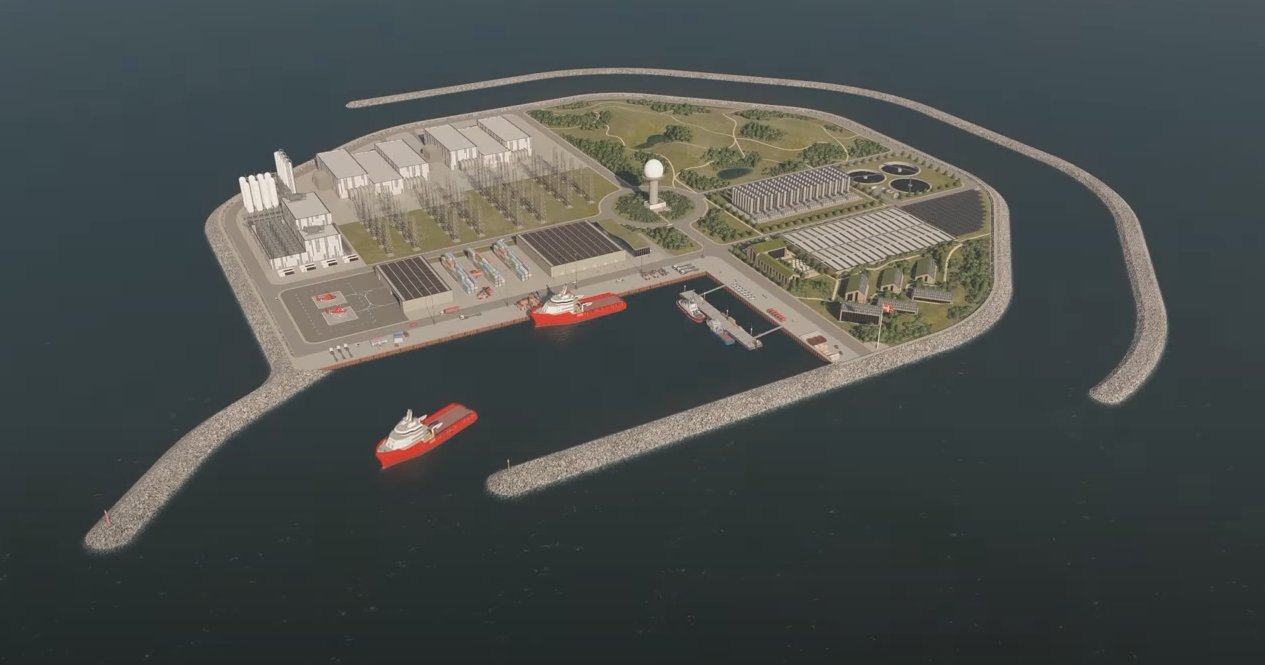VindØ - The world's first energy island
This video shows the VindØ consortium’s preliminary visualisation of the North Sea Energy Island
News
Energy storage
Offshore wind
Smart energy systems
+2


The larger island of the two is now one step closer to being realised. Danish pension funds PFA, PensionDanmark and the Danish utility Andel, together making up the VindØ consortium, have revealed its visions of the world’s first energy island called “VindØ” – Wind Island.
This video shows the VindØ consortium’s preliminary visualisation of the North Sea Energy Island
The island will be located 100 km off the coast of Denmark in the windswept North Sea. By 2030, the island will have the capacity of 3 GW of offshore wind, and eventually, the island will connect 10 GW of offshore wind. This is the equivalent of 25 traditional offshore wind farms.
Read our latest article on energy islands: Energy island – the Baltic sea’s nodal point for intelligent energy
The question has long been, whether the island should be constructed as a steel platform or as an embankment.
Consulting group COWI recently published a cost-benefit analysis of VindØ, which estimates the cost of a 3 GW energy island in the North Sea to amount to EUR 7.93 billion. This applies regardless of whether the island is constructed as caisson embankment or a steel platform. The price includes offshore wind farms and power transmission.
However, a price difference occurs when it comes to the connection of the intended 10 GW in offshore wind, shows the analysis. Here, an embankment solution would be the cheapest solution with a cost of EUR 28.22 billion, while a platform would amount to nearly EUR 29.57 billion.
While the construction of VindØ is still a matter of discussion, the second energy island in the Baltic Sea, Bornholm Energy Island, will make use of the existing island of Bornholm as the site for the power hub.
Earlier this month, German 50Hertz and Danish grid operator Energinet entered into an agreement. They plan to identify whether it is possible and advantageous to construct an electric cable connection between the two countries via the Danish island of Bornholm as a future energy island.
The agreement between 50Hertz and Energinet is the first breakthrough for connecting the two Danish energy islands to other countries. Interconnectors between neighbouring countries are vital to the energy islands being a good idea, both financially and for the green transition, writes Energinet.
The plan is to establish the two energy islands and connect 5-6 GW by 2030 at the latest. However, both renewable energy company Ørsted and PensionDanmark announced that it would be feasible to construct energy islands long before that.
“If we have a reasonably ambitious timetable, we would be able to have an island ready to transmit power into a country’s grid by 2027-28,” said PensionDanmark CEO Torben Möger Pedersen.
A broad majority of the Danish Parliament decided on June 22, 2020 to initiate the construction of two energy islands:
What are energy islands?
The concept of energy islands covers the definition of an existing island, the construction of an artificial island, or an island based on a platform serving as a hub for electricity generation from surrounding offshore wind farms, that will be connected and distribute power between Denmark and neighboring countries. The energy islands will also allow the connection of various offshore technical equipment for electricity generation, e.g. facilities for energy storage, hydrogen or electrolysis plants, or other technologies for energy conversion (for instance PtX).
Source: Danish Energy Agency
Source: Energywatch
publications
Combined heat and power production
+9